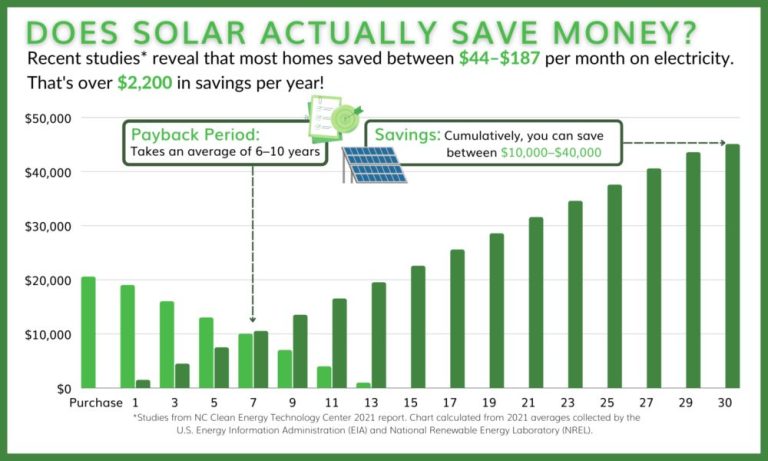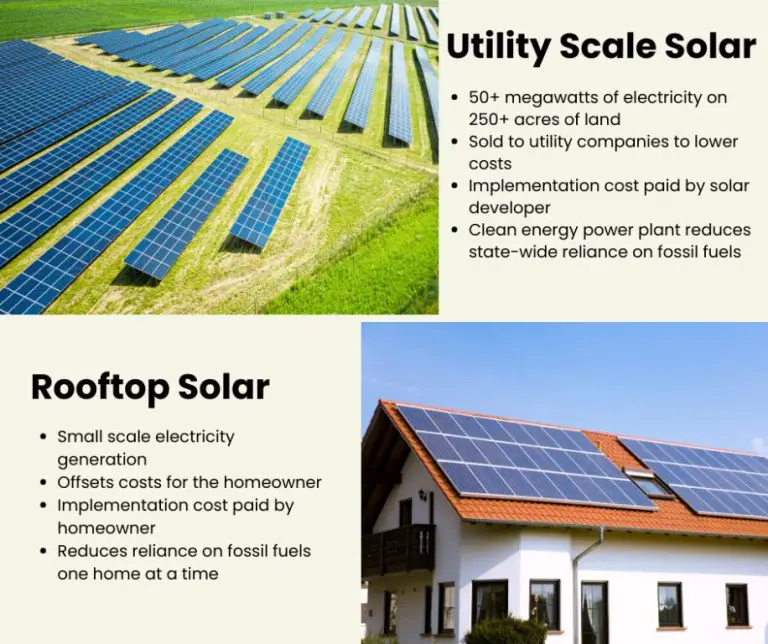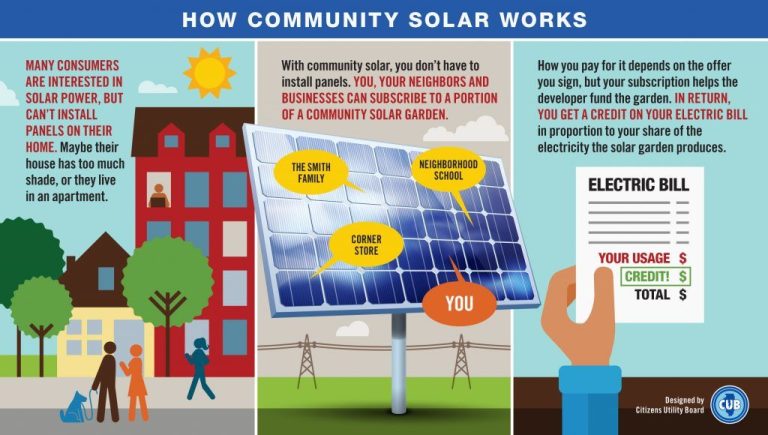Is Solar Power A Natural Resources?
Definition of Solar Power
Solar power harnesses energy from the sun and converts it into electricity using solar photovoltaic panels or solar thermal systems.
Photovoltaic cells in solar panels convert sunlight directly into electricity using the photovoltaic effect. Photovoltaic modules are made up of many individual solar cells and are a key component of solar power systems.
Solar thermal systems use mirrors and lenses to concentrate sunlight in order to heat water or other fluids that can then be used to produce steam to drive turbines for electricity generation.
Overall, solar power utilizes the sun’s energy as a renewable resource to generate electricity with minimal environmental impact and no greenhouse gas emissions.
Definition of Natural Resource
Natural resources are materials occurring in nature that can be used for economic gain. This includes renewable resources like sunlight, wind, water, plants, and animals. It also includes nonrenewable resources like fossil fuels, minerals, and metals. According to Merriam-Webster, a natural resource is “something (such as a mineral, forest, water, or land) that comes from nature and is very useful to people” [1]. The Cambridge Dictionary defines natural resources as “any of the materials such as water, coal, and wood that exist in nature and can be used by people” [2]. In summary, natural resources refer to all the raw materials found in nature that are essential for economic prosperity and human survival.
The Sun as a Natural Resource
The sun provides a massive, renewable energy source for solar power. Sunlight reaches Earth continuously and is available everywhere on the planet’s surface (https://extension.purdue.edu/county/hendricks/4h-youth/our-environment-level-11.pdf). Solar energy is considered a renewable natural resource because it is naturally replenished by the sun. The amount of solar energy that hits the Earth’s surface every hour is greater than the amount of energy used globally in an entire year (https://p2infohouse.org/ref/24/23641.pdf). Unlike fossil fuels which can be depleted, the sun’s energy cannot be exhausted or run out completely. The sun has burned for billions of years and will continue to burn for billions more. This makes sunlight an infinite resource for harnessing solar power.

Comparisons to Other Resources
Fossil fuels like oil and coal are nonrenewable natural resources. Solar energy does not deplete any finite material reserves like fossil fuels do. Similar to other renewable natural resources like wind, hydro, and geothermal, solar energy relies on an ongoing natural process – in this case, the sun’s radiation – rather than a finite store of resources.
Whereas fossil fuels will eventually be depleted if consumption continues at current rates, the sun’s energy will persist for billions of years, making solar a truly renewable resource. Fossil fuels also produce carbon emissions when burned, contributing to climate change. Solar energy generates electricity without any direct carbon emissions.
Overall, solar power contrasts with nonrenewables like oil, gas, and coal by providing energy without depleting finite reserves or generating greenhouse gas emissions. This makes it more akin to other renewable sources that rely on ongoing natural cycles like wind, hydroelectric, geothermal, and biomass energy.
Environmental Advantages of Solar Power
Solar energy has several environmental benefits compared to fossil fuel energy sources like coal, oil, and natural gas. Unlike fossil fuels, solar panels produce electricity with no air or water pollution. According to EngineerInc, “Solar power helps in reducing the emissions that affect the quality of air and water” (Source). Solar energy systems have minimal impacts on habitats and wildlife. The Energy5 article notes that solar farms use relatively little land compared to other energy sources. Additionally, solar power can help conserve finite resources like coal and natural gas. The transition to renewable solar energy will preserve these nonrenewable resources for future generations.
Growth of Solar Power
Solar power capacity has expanded exponentially in recent years. According to data from the Solar Energy Industries Association, total installed solar electric capacity in the United States has grown from 1.2 gigawatts in 2008 to over 122 gigawatts by the end of 2020, an increase of over 10,000% (Solar Energy Industries Association). Improving efficiency and falling prices have driven rapid adoption of solar power. The average cost to install solar has dropped by more than 70% over the last decade, making it more affordable for homeowners and businesses (EIA.gov). As a result, solar supplied about 4% of U.S. electricity generation in 2021, up from just 0.1% in 2008.
Challenges and Limitations
While solar power has many benefits, there are some challenges and limitations to consider according to GreenMatch article. First, solar output depends on weather and daylight hours. Solar panels do not work as efficiently in cloudy or cold weather conditions, and they do not produce any power at night. This intermittency can make solar an unreliable source of energy without adequate storage solutions.
Second, to provide consistent power when the sun is not shining, energy storage systems are needed. Batteries can store solar energy for use at night, but utility-scale storage is still expensive. Until affordable large-scale storage is available, solar remains limited as a primary energy source.
Finally, solar power facilities require large land areas to capture enough sunlight. Rooftop systems can help reduce land usage, but utility-scale solar farms take up significant space. The amount of open land needed for solar can be a challenge, especially in densely populated regions.
Policies Supporting Solar
Federal, state, and local policies provide critical support for the growth of solar power. Key policies that promote the adoption of solar energy include:
Tax credits, rebates, and other financial incentives help make solar power more affordable and accessible to homeowners and businesses. The federal Solar Investment Tax Credit (ITC) offers a 26% tax credit for systems installed in 2022-2023, which will step down to 22% in 2024 and eventually 10% in 2026 and after Support strong state-level solar policies. Many states and utilities offer additional rebates and incentives on top of the federal ITC.
Net metering policies allow solar customers to receive credit or payment from their utility for any excess electricity sent back to the grid. This enables solar owners to offset the cost of their system over time. As of 2020, 40 states had mandatory net metering policies Solar Energy Policies and Incentives.
Renewable portfolio standards (RPS) mandate that utilities source a certain percentage of their power from renewable sources like solar and wind. As of 2021, 30 states had RPS policies with solar or distributed generation provisions Understanding Solar Energy Policies And Regulations. RPS goals encourage utilities to invest in solar and grow renewable capacity.
Future Potential
The future technical potential of solar power is promising. According to the National Renewable Energy Laboratory (NREL), innovations will increase solar efficiency and lower costs.1 For example, improvements in solar cell technology and manufacturing can increase efficiency up to 30-35%, compared to today’s 15-20%. Advancements in materials and application-specific PV promise to cut costs even further.
Additionally, distributed solar, microgrids, and energy storage will make solar systems more resilient and reliable.2 Combining solar with storage provides backup power and allows solar energy to be dispatched when needed. This supports grid stability and addresses the intermittency of solar generation.
Looking ahead, projections foresee solar energy expanding significantly. By 2050, solar may provide up to 45% of U.S. electricity generation as costs drop and supportive policies are implemented.2 With continuing innovation and growing deployment, solar power has the potential to be a major renewable electricity source well into the future.
Conclusion
Solar energy originates from the sun’s natural light, a renewable resource that constantly shines on Earth. In this way, the development of solar power transforms the sun into a viable energy source much like fossil fuels and wind. While solar panels cannot capture all the sun’s energy, the resource remains far more abundant than coal or oil reserves. Solar power shares traits with other renewable natural resources that avoid depletion and sustainably supply energy generation.
While limited by panel efficiency, weather, and daylight hours, solar provides clean energy without depleting finite resources. The renewable nature and origins of solar power lend strong evidence that it qualifies as a natural resource. Unlike fossil fuels that will eventually run out, the potential solar energy available dwarfs global energy demand. With supportive policies and advances in technology, solar appears poised to expand renewable energy reserves and provide a major sustainable energy source for the world’s future.







